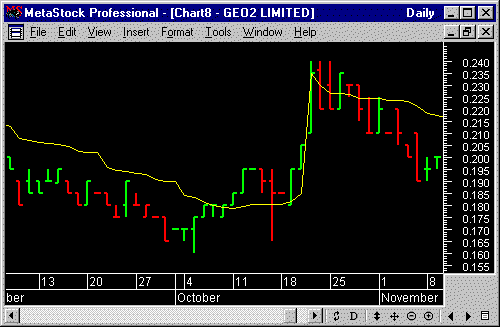|
Moving Averages - Volume Adjusted

Description
Dick Arms,
well-known as the developer of the Arms
Index and the equivolume charting method
developed a unique method for
calculating moving averages. In keeping
with his prior work, the calculation
method incorporates volume and is
appropriately called a volume
adjusted moving average .
The
calculation for a volume adjusted moving
average is somewhat complex; however, it
is conceptually easy to understand. All
moving averages (even volume adjusted)
use some type of weighting scheme to
"average" the data. Exponential and
weighted moving averages assign the
majority of weight to the most recent
data. Simple moving averages assign the
weight equally across all data. Variable
moving averages assign the majority of
the weight to the most volatile
data. And as its name implies, volume
adjusted moving averages assign the
majority of weight to the day's with the
most volume.
A volume
adjusted moving average is calculated as
follows:
-
Calculate the average volume using
every time period in the chart.
-
Calculate the volume increment by
multiplying the average volume by
0.67.
-
Calculate each period's volume ratio
by dividing each period's actual
volume by the volume increment.
Starting at
the most recent time period and working
backwards, multiply each period's price
by the period's volume ratio and
cumulatively sum these values until the
user-specified number of volume
increments is reached. Note that only a
fraction of the last period's volume
will likely be used. |